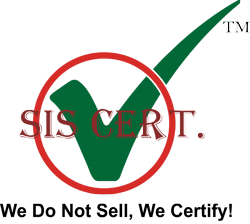When is the right time for an organisation to go for ISO 22000:2018 Certification?
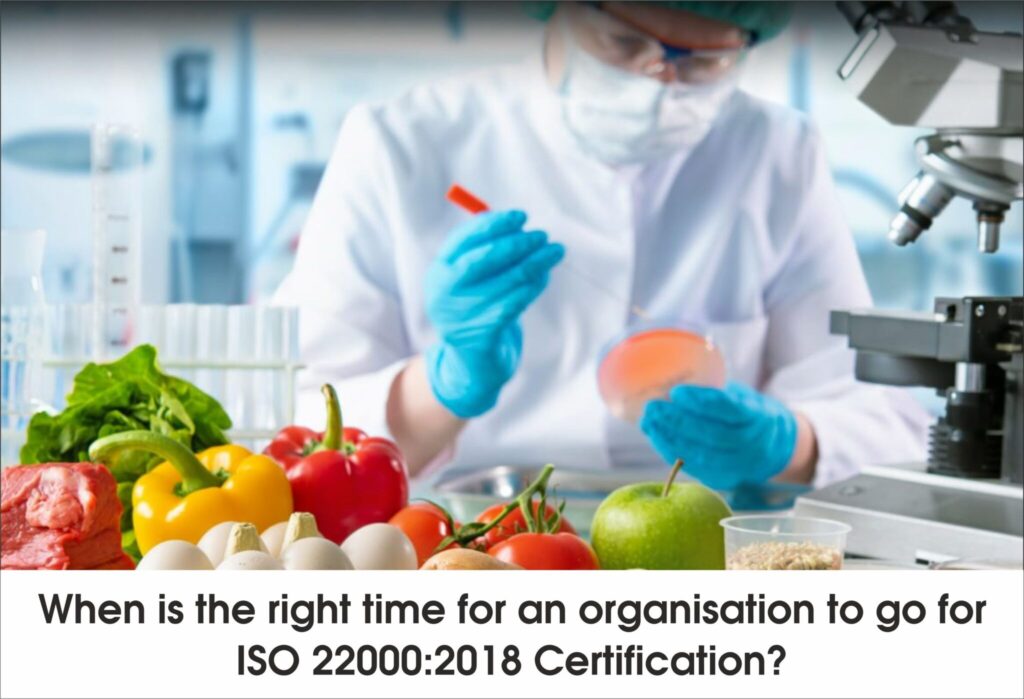
In today’s globalised and highly competitive business environment, organisations across various industries are constantly seeking ways to improve their processes, enhance product quality, and ensure the safety of their products. One effective way to achieve these goals is by obtaining ISO 22000 certification. It is a globally recognised Food Safety Management System (FSMS). However, many organisations often find it challenging to decide, “When is the right time for an organisation to go for ISO 22000 certification?” In this blog, we’ll explore the factors that will help you pursue ISO 22000 certification and determine the optimal timing for your organisation. Factors that encourage organisations to apply for ISO 22000 Certification Commitment to Food Safety ISO 22000 certification demonstrates an organisation’s unwavering dedication to food safety. If prioritising the safety of food products is genuinely ingrained in your organisational values, pursuing this certification should be your primary focus. ISO 22000 sets strict benchmarks for food safety management systems, encompassing hazard analysis and continuous improvement. Regulatory Requirements Organisations must comply with regulations and statutory requirements to achieve ISO 22000 certification to operate in the market. Moreover, it is critical to investigate the regulatory environment and discover the requirements of ISO 22000 certification before entering new markets or sectors. Customer Demands Customer awareness and concern regarding food safety have reached new heights in modern times. Consumers view ISO 22000 certification as a symbol of trust and excellence, as it assures them the food products they consume are safe and high-quality. It exhibits that the opportune moment to pursue certification has arrived. Competitive Advantage The ISO 22000 certificate offers businesses a substantial edge in the competitive market. It shows your dedication to food quality and safety, which can distinguish you from rivals who lack this accreditation. Operational Readiness An ISO 22000-certified organisation follows a systematic method and process-based approach to ensure food safety. It ensures that an organisation has the essential resources, such as competent staff, sufficient time, and financial means. Moreover, the certification conducts a comprehensive internal evaluation that will help identify any shortcomings in your food safety management system, allowing you to take appropriate measures to rectify them. Continuous Improvement The implementation of ISO 22000 represents a commitment to ongoing improvement to deliver safe and healthy food products. You are on the right track if your company is already committed to enhancing food safety procedures and is proactive in resolving any problems or difficulties that may occur. Cost-Benefit Analysis Organisations with an ISO 22000 certificate have significant resources in terms of time and finances. It mandates organisations to conduct a comprehensive cost-benefit evaluation to decide if the investment in ISO 22000 certification is worthwhile. Assess the potential return on investment, such as the ability to attract new customers, expand market presence, and enhance operational efficiency. Employee Engagement It is essential to include personnel at all levels of the business for organisations to achieve ISO 22000 certification. The certification process runs more smoothly and efficiently when staff members are informed about and encouraged food safety. You are better prepared to pursue ISO 22000 certification if your company has already conducted employee training and engagement programmes relating to food safety. Conclusion ✅ Organisations must demonstrate their compliance with regulatory requirements, customer demands, competitive advantage, and operational readiness to obtain a food safety certificate. Organisations must evaluate multiple variables to decide the best time to pursue ISO 22000 certification. Certification is a powerful marketing tool for boosting food safety, quality, and overall business performance. Enjoy Reading – ISO 22000 Food Safety Management Systems Why Food Safety Certification is Important in Poland Guide For Food Safety Certifications
What is the role of ISO 22000:2018 Certification in ensuring the Safety of Food Products?
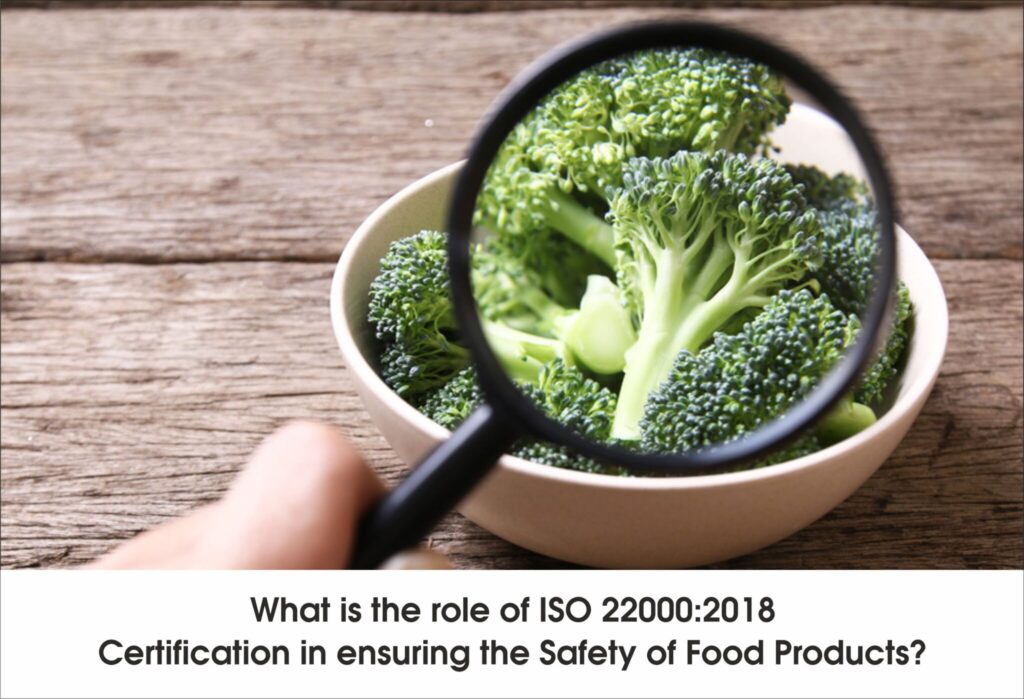
The common concern shared by customers and food supply chain industries is related to the safety and quality of food products. Food safety is significant for public health and the reputation of food companies. Moreover, it is the responsibility of organisations to ensure the delivered food people are safe and free from contamination. The International Organisation for Standardisation (ISO) has developed ISO 22000:2018 certification. Furthermore, the standard mandates organisations to maintain and measure the security and quality of food products. In this blog, you will read about the importance of ISO 22000 and how it contributes to preserving the quality and safety of food items. What is ISO 22000 Certification? ISO 22000 is a globally known for Food Safety Management Systems (FSMS). The certification provides a robust framework for establishing, putting into practice, and maintaining a reliable food safety management system. Moreover, it includes organisations involved in the food supply chain, from farmers and food manufacturers to merchants and food service providers, who must adhere to ISO 22000 requirements The role of ISO 22000 Standards in ensuring Food Safety ⮯ ISO 22000 provides a systematic framework for food industries to ensure and maintain food safety. It mandates organisations to establish hazard analysis, preventive measures, traceability, communication, and continuous improvement to reduce risks of contamination and illnesses. Hazard Analysis: ISO 22000:2018 mandates an organisation to conduct a risk assessment to outline potential food safety hazards and threats. Moreover, it involves identifying and detecting potential dangers at all stages of the food supply chain. Hazards can be biological, chemical, and contaminants, and HACCP helps organisations take proactive measures to mitigate them. Preventive Measures: Organisations must follow ISO 22000 guidelines and implement preventative measures to identify and manage risks. These precautions could include sanitation protocols, hygiene standards, and quality assurance tests. Moreover, it reduces the likelihood of contamination and foodborne illnesses. Traceability: The standard mandates organisations to follow the principle of traceability to establish a safe food supply chain. As a result, it enables businesses to monitor and trace the movement of food products along the supply chain. Through traceability, it is possible to rapidly locate potential hazards concerning food safety and address them accordingly. Communication: Effective communication is a significant component to ensure success. ISO 22000:2018 standard requires an organisation to establish productive communication within the company and with outside parties like clients and suppliers. Moreover, it focuses on imparting information about potential threats to food safety, protective measures, and any modifications to procedures or goods clearly and concisely. Continuous Improvement: The principle of continuous improvement requires an organisation to continuously examine and upgrade its food safety management systems to reflect new information and conditions. Compliance with Legal Requirements: ISO 22000 helps organisations maintain and measure compliance with national and international laws and regulations related to food safety. Moreover, it helps food industries to adhere to legal obligations and avoid legal issues and penalties. Benefits of ISO 22000:2018 Standards ⮯ ISO 22000 offers numerous benefits to the food industry. Moreover, it assures consumers of safer products while boosting organizations’ competitiveness and trustworthiness in the food industry. The following are the benefits of the Food Safety Management Systems (FSMS) :- Establishes a safe food supply chain: Implementing ISO 22000 assists businesses in reducing the risk of foodborne illnesses by implementing appropriate preventive measures. It provides tools and controls for organisations to trace the food supply chain, from farmers and manufacturers to distributors. Creates a better reputation: ISO 22000 Certification is a hallmark of trust and reliability. Hence, an organisation with an FSMS certificate increases the brand value of an organisation by demonstrating its commitment to food safety. Access to the global market: ISO 22000:2018 certification exhibits an organisation’s commitment to international best practices. However, many merchants and customers prefer ISO-certified companies to conduct business with or buy goods. Cost savings: It helps organisations avoid food safety accidents. However, businesses can save money by avoiding expensive product recalls, legal disputes, and harm to their reputation. Conclusion ✅ ISO 22000 is essential to assure the safety and quality of food items. Additionally, it facilitates effective communication, fosters continuous development, and aids organisations in identifying and controlling risks to food safety. Organisations with an ISO 22000 certification can offer consumers safer food products and improve their reputation in the global food market. Enjoy Reading – What are the ISO 22000 Requirements ISO 22000 Food Safety Management Systems How to Start Food Business In India ISO Certifications For Hospitality Businesses
Achieving ISO 27701 Compliance: A Step-by-Step Journey
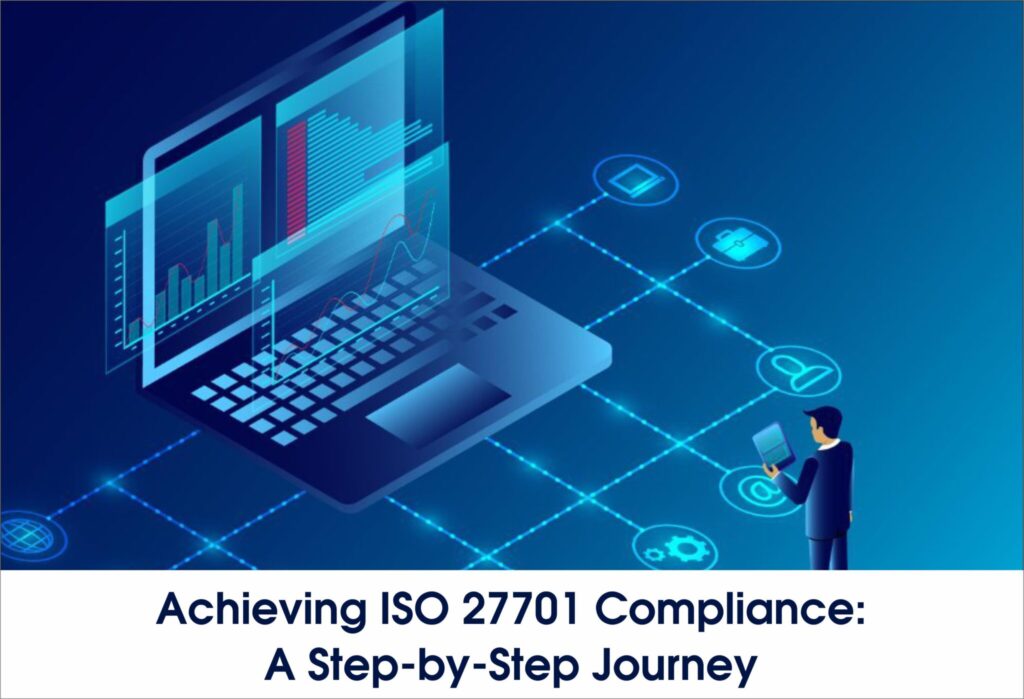
We live in an increasingly data-driven world, where data privacy and security have become paramount concerns for organizations. Data collected and stored by the organization is an invaluable information asset. However, it is the responsibility of the organizations to safeguard vulnerable data of their clients and customers. Customers and regulatory bodies mandate organizations to manage personal data with the utmost care and transparency. In response to these concerns, the International Organization for Standardization (ISO) introduced ISO 27701:2019 certification, a standard to ensure a Privacy Information Management System (PIMS). Moreover, it is equally necessary for organizations to measure and maintain compliance with ISO 27701 requirements to demonstrate their commitment to data privacy. In this blog, we are going to explore the step-by-step journey to maintain ISO 27701 compliance to reap the standard’s benefits and achieve the intended outcomes. What is the ISO 27701 Standard? An international standard called ISO 27701:2019 addresses how to protect the privacy of personally identifiable information (PII). The worldwide standard for information security management systems (ISMS), ISO 27001, is extended by this. Organizations can establish, implement, manage, and continuously enhance a Privacy Information Management System (PIMS) using the frameworks and principles provided by ISO 27701. The General Data Protection Regulation (GDPR) and other privacy regulations are met by enterprises with the help of the standard. By integrating privacy controls and procedures into an organization’s current information security management system, ISO 27701:2019 standards offers a comprehensive approach to data privacy. What are the benefits of the ISO 27701 Standard? ⮯ The following are the benefits of ISO 27701 certification :- Enhanced Privacy Protection – Organizations can create a solid foundation for safeguarding the protection of personal information with the use of ISO 27701. Compliance with Privacy Regulations – The GDPR and other privacy laws and frameworks are in line with ISO 27701. Trust and Reputation – Organizations can gain the trust of their stakeholders, such as clients, partners, and regulators, by implementing ISO 27701 and showing compliance with privacy laws. A step-by-step guide to achieving ISO 27701 certification compliance ⮯ Understanding the principles of ISO 27701 is crucial before starting the compliance journey. The extension of ISO 27001, which addresses information security management. However, the focus of ISO 27701:2019 is on privacy information management systems (PIMS). It offers enterprises a framework for creating, implementing, maintaining, and continuously improving a PIMS. The goal of ISO 27701 is to support organizations in managing personal data responsibly and upholding individuals’ right to privacy. Step 1: Displaying Leadership and Governance:Establishing leadership and governance is the first step toward ISO 27701 compliance. This entails designating the duties of important individuals and establishing a Privacy Information Management System (PIMS) manager. Driving the compliance effort throughout the organization depends heavily on leadership. Step 2: Scope Definition:It’s crucial to establish the PIMS’s scope. How and where does the data that you manage flow? Finding the limits of your PIMS aids in clarifying the scope and concentrating compliance efforts on the appropriate areas. Step 3: Conducting a Privacy Impact Assessment (PIA):A Privacy Impact Assessment is a critical component of ISO 27701 compliance. It involves identifying and assessing the privacy risks associated with data processing activities. A Privacy Impact Assessment (PIA) helps in understanding the potential impact on individuals’ privacy and guides organizations in implementing necessary controls to mitigate these risks. Step 4: Develop Policies and Procedures:A privacy impact assessment is a crucial part of complying with ISO 27701. It entails determining and evaluating the privacy hazards connected to data processing operations. A PIA aids in evaluating the potential impact on people’s privacy and directs businesses in putting in place the appropriate safeguards to reduce these risks. Step 5: Training and Awareness:Employee education on data privacy and their responsibilities for upholding compliance is essential. Regular training sessions and awareness campaigns aid in developing an organization-wide privacy culture. Step 6: Implementing Controls:Companies must adopt the precise measures outlined in ISO 27701 to protect personal data. Encryption, access control, data breach response, and other actions are among the processes. The implementation of these controls is a vital stage in the compliance process. Step 7: Monitoring and Measurement:The PIMS remains effective over time to ensure the performance must be measured and monitored continuously. The system should be frequently assessed and evaluated, and adjustments should be made as needed. Step 8: Conducting Internal Audits:Organizations can find areas where compliance may be missing or where changes are made using internal audits. These audits should be carried out often, ensuring ISO 27701 compliance. Step 9: Management Review:The effectiveness and performance of the Privacy Information Management System (PIMS) should be frequently reviewed by senior management. Data privacy is preserved thanks to this review. Conclusion ✅ Achieving ISO 27701:2019 compliance is a comprehensive journey that demands meticulous planning and execution. The certification requires an organization to define the scope, conduct Privacy Impact Assessments, and develop policies and procedures to establish a robust Privacy Information Management System (PIMS). Enjoy Reading – Know About ISO 37001 Standard ISO 37001: Anti-Bribery Management System-Benefits and Implementation Non-Conformity and Corrective Action Major/Minor Non-Conformances : Explored in Detail
The Roadmap to GMP Certification: Steps and Benefits
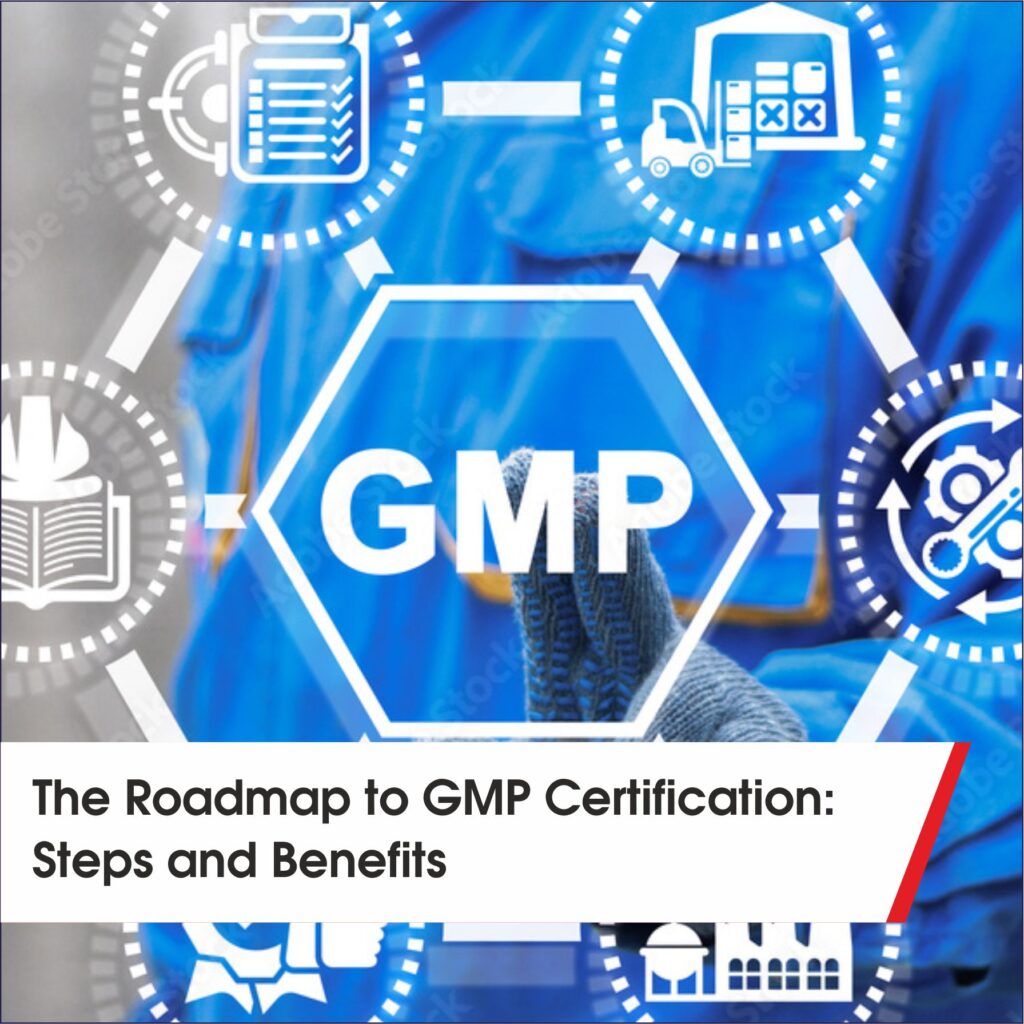
Good Manufacturing Practices (GMP) accreditation has emerged as a critical benchmark for guaranteeing product safety, quality, and compliance in today’s highly regulated and quality-driven sectors. Organisations can outline the road plan to attain GMP certification and maintain high manufacturing standards. This article outlines the essential procedures for acquiring GMP certification and outlines the many advantages it provides to organisations. What is Good Manufacturing Practices (GMP)? Good Manufacturing Practices (GMP) is a quality management system that outlines the minimum requirements for manufacturing, packaging, labelling, and testing products. The guidelines ensure the consistent quality, safety, and efficacy of products manufactured in regulated industries. These guidelines are established and enforced by regulatory agencies such as the Food and Drug Administration (FDA) in the United States and the European Medicines Agency (EMA) in Europe. GMP certification is essential for businesses operating in various industries, including pharmaceuticals, food and beverages, cosmetics, and medical devices. A Step-by-Step Guide to Achieve GMP Certification ⮯ Achieving a Good Manufacturing Practices (GMP) certificate is a rigorous process. Moreover, organisations can follow these steps to obtain a GMP certification :- Assessing Current Practises: The initial step requires conducting an internal assessment to monitor and measure production and quality control procedures. Moreover, to satisfy GMP requirements, organisations shall assess operations records, employee training, and facilities to determine improvement areas. Providing Training: Employees at all levels must get training on GMP practices and principles to comply with GMP criteria. Everyone must comprehend the significance of compliance and adhere to the established norms in this training. Documentation: A crucial component of GMP compliance is thorough and organised documentation. Moreover, this entails producing batch records, quality manuals, standard operating procedures (SOPs), and others. Facilities Design and Maintenance: Facilities must be designed and maintained in accordance with GMP standards to achieve intended manufacturing outcomes. Furthermore, it ensures GMP compliance with international best practices. Testing and Quality Control: Adhering to GMP regulations requires having effective testing and quality control procedures. Companies must follow quality control labs to test raw materials, samples taken during production, and completed goods to ensure they adhere to predetermined standards. Supplier Qualification: Organisations should assess and qualify their suppliers to ensure they follow GMP guidelines. Moreover, audits and evaluations of the facilities and operations of suppliers are necessary to ensure compliance. Auditing and Inspection: Organisations must evaluate their compliance with GMP guidelines defined by regulatory bodies. Moreover, they shall conduct frequent audits and inspections to detect and address potential threats and opportunities. Corrective and Preventive Activities (CAPA): It’s critical to take corrective and preventive action to eliminate non-compliance issues. Investigating the underlying causes of the problems and putting preventative measures in place are necessary. Application for GMP Certification: Once a business is confident that it has complied with all GMP regulations, it may apply for GMP certification to the appropriate regulatory body. This application comes with thorough supporting materials and proof of compliance. Continuous Improvement: GMP certification is a lifelong commitment rather than a one-time accomplishment. Moreover, businesses must regularly review and enhance their systems and processes to maintain GMP compliance. Benefits of GMP Certification for Organisations GMP certificate offers a goldmine of benefits to organisations. Moreover, an organisation can avail of the following benefits by implementing Good Manufacturing Practices (GMP) Certification :- – GMP certification proves a business’s dedication to abiding by stringent regulatory requirements. As a result, there is less chance of regulatory measures like penalties or product recalls. – GMP principles provide a robust structure and focus on establishing efficient and controlled production processes, which can result in cost savings. – GMP certification is a widely accepted standard worldwide that assures good quality and safety of products. However, GMP-accredited businesses can more readily access international markets and participate in global competition. – GMP certification verifies that products are fit for consumption, lowering the possibility of adverse consumer events or health-related problems. – GMP accreditation is a powerful marketing tool that can draw clients and business partners, giving certified organisations an advantage over their rivals. Conclusion ✅ It takes dedication to excellence in manufacturing practices to earn GMP accreditation. The path to GMP certification requires thorough planning, education, record-keeping, and regular compliance monitoring. Moreover, obtaining GMP ISO certification is a wise investment for businesses functioning in regulated industries. Enjoy Reading – Know About ISO 37001 Standard ISO 37001: Anti-Bribery Management System-Benefits and Implementation Non-Conformity and Corrective Action Major/Minor Non-Conformances : Explored in Detail
The Cost of Non-Compliance: Why ISO 21001 Matters?
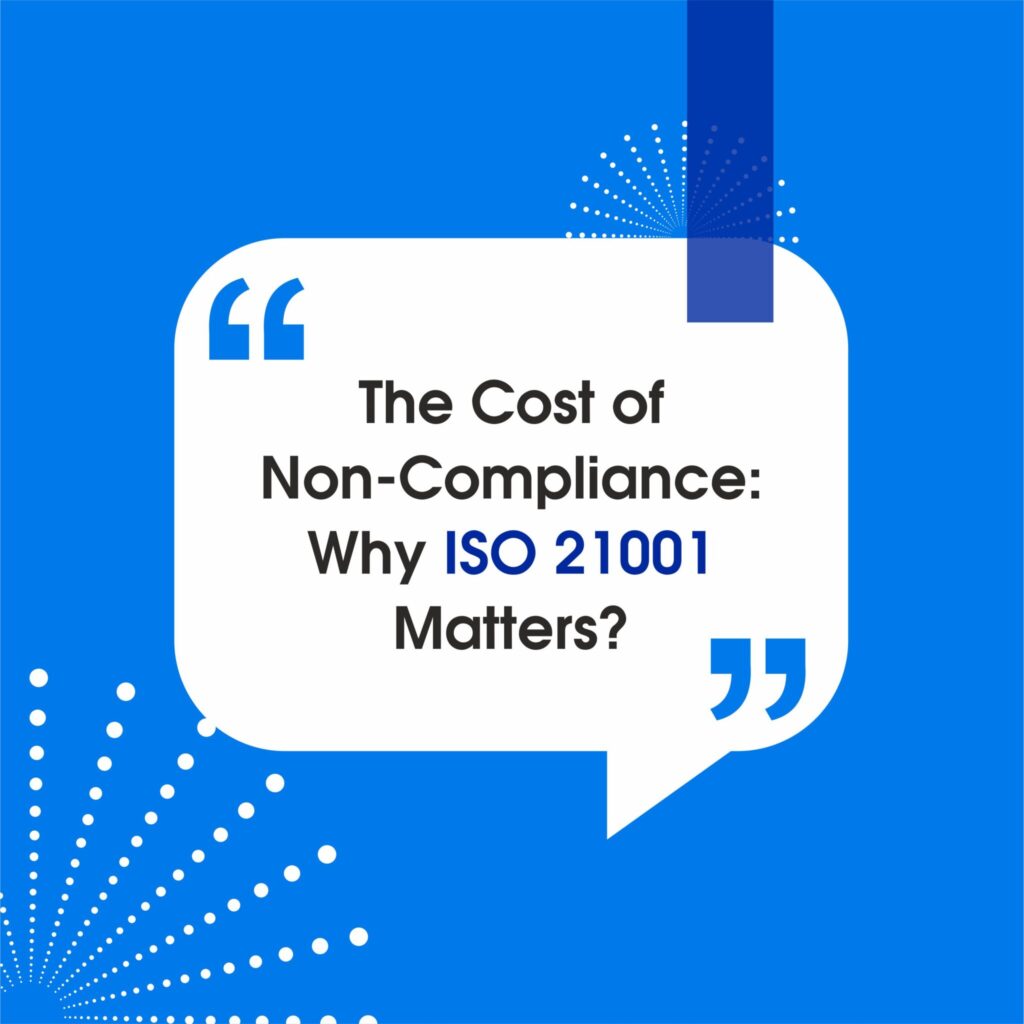
ISO 21001:2018 certification is a globally recognised standard that signifies an educational organisation’s commitment to delivering high-quality education services. It focuses on establishing an effective Educational Organisation Management System (EOMS) that ensures the fulfilment of educational objectives, student satisfaction, and continuous improvement. The certification involves a rigorous audit by an accredited ISO certification body to assess compliance with ISO 21001 requirements. Achieving ISO 21001 certification demonstrates an institution’s dedication to providing excellence in education, enhancing stakeholder satisfaction, and fostering a culture of continual improvement in educational processes and outcomes. What could be the possible ISO 21001:2018 standard? ISO 21001 is a standard that helps educational organisations improve their educational management systems. Non-conformities in ISO 21001 refer to instances where an organisation’s practices or processes do not meet the requirements and criteria outlined in the standard. Here is a list of possible ISO 21001:2018 non-conformities: Inadequate Documentation Undefined Educational Objectives Lack of Stakeholder Engagement Inefficient Resource Allocation Non-compliance with Regulatory Requirements Inadequate Curriculum Design Insufficient Feedback Mechanisms Inadequate Corrective Actions Incomplete Training and Development Resource Shortages Data Security and Privacy Ineffective Internal Auditing Failure to Monitor and Measure Inadequate Continual Improvement Lack of Leadership Commitment Inadequate Communication Resource Constraints Student Complaints Non-compliant Faculty Practices Lack of Faculty Training The Consequences of Non-Compliance with ISO 21001 ⮯ Non-compliance with ISO 21001 can have several adverse consequences for educational organisations. These consequences go beyond monetary penalties and can significantly impact an institution’s reputation, credibility, and long-term sustainability. Diminished Educational Quality – Failure to implement ISO 21001:2018 certification may result in a lack of standardisation in educational processes, leading to inconsistencies in curriculum delivery and assessment. Moreover, this can ultimately compromise the quality of education and negatively affect students’ learning experiences and outcomes. Decreased Stakeholder Trust – Stakeholders, including students and parents, trust educational institutions to provide quality education. Non-compliance with ISO 21001 can erode this trust, leading to a decline in enrolment and loss of revenue. Negative word-of-mouth and publicity can further damage an institution’s reputation. Inefficient Resource Utilisation – Without a strong management structure, institutions might have trouble allocating resources effectively. It may lead to a waste of resources, including academic time and money. The ability of an institution to invest in faculty development, infrastructure enhancements, and other crucial changes can be hampered by ineffective resource management. Legal and Regulatory Consequences – ISO 21001-certified educational institutions follow various national and international laws and regulations. It helps them avoid legal implications, fines, and even actions against the institution’s management that may result from noncompliance. Additionally, this may take time and resources away from important instructional tasks. Competitive Disadvantage – ISO 21001 certification is increasingly becoming a differentiator in the education sector. Institutions that have obtained ISO 21001 certification can use it as a marketing tool to attract students and gain a competitive advantage. Non-compliant institutions may find it challenging to compete effectively in the market. Conclusion ✅ ISO 21001:2018 certification is significant for educational organizations, representing their commitment to excellence in education delivery and management. Compliance with this global standard ensures the fulfilment of educational objectives, student satisfaction, and a continuous drive for improvement. It is crucial to address and rectify possible non-conformities in ISO 21001, such as inadequate documentation, undefined educational objectives, and insufficient stakeholder engagement, to maintain the integrity of the educational management system. Enjoy Reading – Non-Conformity and Corrective Action Major/Minor Non-Conformances : Explored in Detail Non-Conformity Blog On ISO 9001:2015
Everything You Need to Know about ISO 13485:2016 Certification?
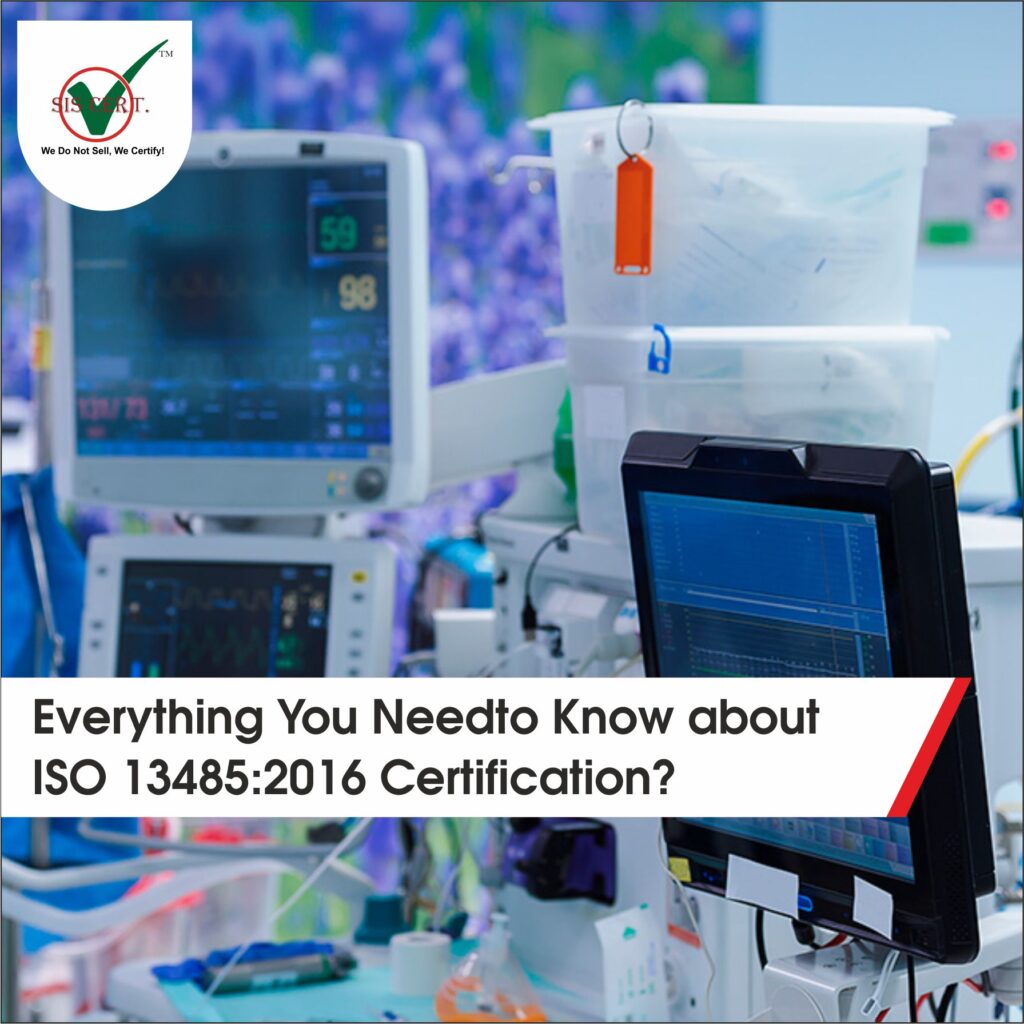
ISO 13485:2016 is a golden standard for Medical Devices – Quality Management Systems (MDQMS). The certification recognized the need and requirement for business organizations to deliver safe and quality medical devices. The last version of the certification is ISO 13485:2016 certification. Definition of ISO 13485:2016 Certification ISO 13485 standard is for medical device quality management based on the ISO 9001 requirements. The certification focuses on designing a more coordinated medical device regulatory policy to monitor and measure the effectiveness of products. The standard provides specific guidelines for medical device manufacturers to ensure the well-being and safety of end users. ISO 13485 standard is a Quality Management System specifically designed for medical devices. Moreover, the certification includes: – Formulating an adequate Medical Devices – Quality Management System (MDQMS) policy. Follows a Risk Management Approach for product development and product realization Defining the scope of business processes It maintains compliance with statutory and regulatory requirements Effective product traceability and recall systems Benefits of Implementing ISO 13485 Certification for an Organization ⮯ ISO 13485 offers a goldmine of benefits for the medical device industry. Moreover, the organizations can reap the benefits only after the successful implementation of the ISO 13485 certification. The benefits of the standard are as follows:- It creates a positive image of a company – The ISO 13485 certification is a globally recognized standard for quality management, specifically for medical devices within the healthcare sector. The standard is a hallmark of trust and credibility; hence, it creates a positive image of an organization in the market. Promotes evidence-based decision-making – The certification demonstrates the responsible behavior of the organization by adhering to rigorous quality standards. It provides a robust framework for organizations to maintain quality standards by studying previous data and information. Moreover, it follows an adequate data management strategy to achieve organizational goals and objectives. Establishes a culture of continuous improvement – ISO 13485 standard follows the principle of continuous improvement to achieve the intended quality goals and objectives. The Medical Devices – Quality Management System (MDQMS) integrates within the existing management system to foster a culture of continuous improvement. Increases employee engagement – ISO 13485:2016 standard aims to document all the business operations and process control to monitor the effectiveness of the certification. Moreover, it focuses on rendering a clearer understanding of their roles to employees and increasing productivity. Requirements of ISO 13485:2016 Certification ⮯ The requirements of ISO 13485 standard are as follows: SECTION 1: SCOPESECTION 2: NORMATIVE REFERENCESSECTION 3: TERMS AND DEFINITIONSECTION 4: QUALITY MANAGEMENT SYSTEM General Requirements Documentation Requirements SECTION 5: MANAGEMENT RESPONSIBILITY Management Commitment Customer Focus Quality Policy Planning Responsibility, Authority, and Communication Management Review SECTION 6: RESOURCE MANAGEMENT Provision of Resources Human Resources Infrastructure Work Environment and Contamination Control SECTION 7: PRODUCT REALIZATION Planning of Product Realization Design and Development Customer-Related Process Purchasing Product and Service Provision Control of Monitoring and Measuring SECTION 8: MEASUREMENT, ANALYSIS AND IMPROVEMENT Internal Audits Control of Non-Conforming Product Analysis of Data Improvement Conclusion ✅ ISO 13485:2016 certification aims to consistently provide safe and high-quality medical devices to fulfill customers’ needs and requirements. However, it measures compliance with the regulations and technical requirements to demonstrate an organization’s commitment to delivering effective and quality medical devices.
